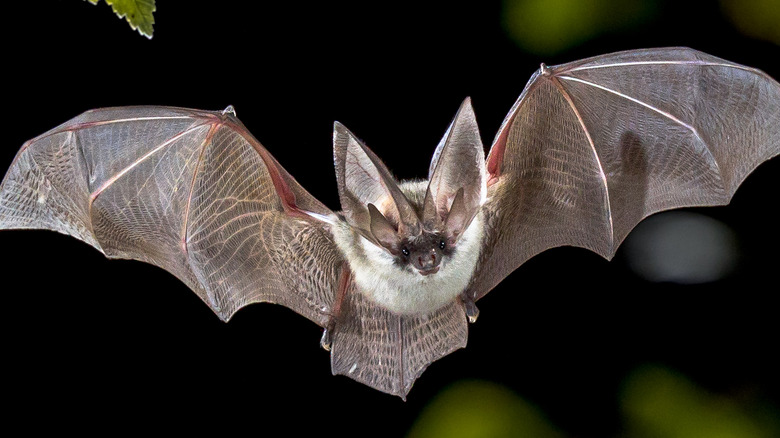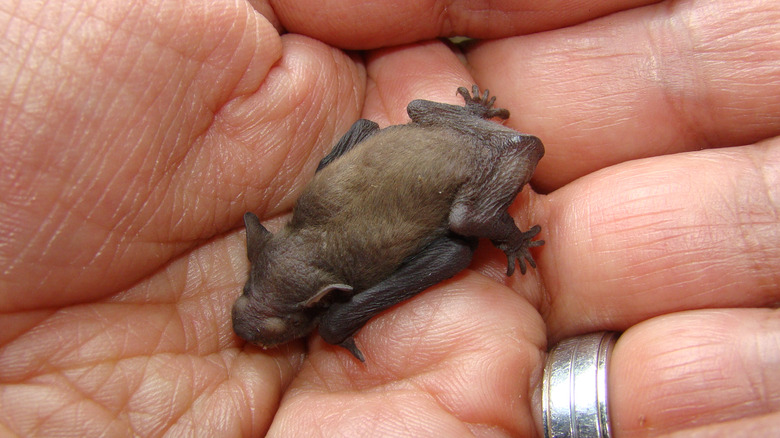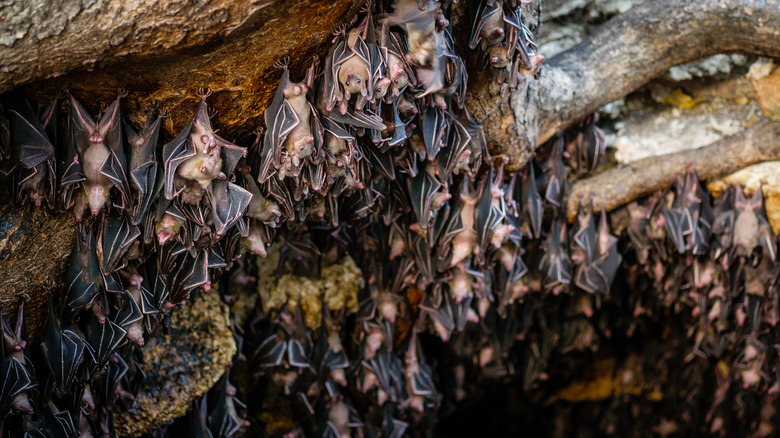The Strange Way Bats Give Birth
When you think of bats, you might think of vampires, Batman, or infestations in the attic. But bats are actually very unique and complex creatures. According to National Geographic, there are over 1,300 species of bats in the world, which range widely in size, environment, and location. From so-called "microbats" that live in dark caves and hunt insects at night to "megabats" that live in warmer areas and eat fruit and pollen, no two species of bats are exactly alike. However, bats do tend to share some common characteristics. For instance, many microbats use echolocation to navigate and hunt, according to Tolga Bat Hospital. (Echolocation is the use of sound waves to locate objects in the dark.)
Another trait common to many bats is how they give birth. As the only mammals that can fly, bats are sometimes mistaken for birds, according to the Museum of Arts and Sciences. But bats are mammals, and they reproduce like mammals do, becoming pregnant and giving birth to live young. Still, that doesn't mean their births would be considered normal by human standards.
Bats give birth upside down
Bats mate during the wet season, which in North America usually means March or April, according to Montana Public Radio. Depending on the species of bat, their pregnancies are between six to nine weeks long, according to the Bat Conservation Trust. Most bats only have a single baby, although some species can have up to four pups at once (via Terminix).
The birth itself is where things get interesting. While humans tend to give birth laying down or standing up, in a position where gravity can help a baby descend, bats do things a little differently — they give birth while hanging upside down. As the mother hangs from her feet, the baby emerges, sometimes even helping to claw itself out from her womb. After it's born, the baby, which can't fly at birth, will fall. So it's essential that the mother catches the baby in her wings, according to Pest Pointers.
How bats care for their young after birth
Once babies are born, they rely on their mothers' milk for around four to five weeks, during which period they are not able to fly and hunt for themselves (via the Bat Conservation Trust). However, mothers do not remain in their roosts this entire time, according to Montana Public Radio. Instead, mother bats leave their babies in groups of other young. Then, once they return from hunting, they find their baby to feed them and pick them up again.
Like most mammals, bats primarily feed their own young. But sometimes bats can co-feed their babies, particularly when they roost in groups called maternity roosts. Maternity roosts occur when groups of reproducing female bats find a common location to roost. In maternity roosts, during the last few weeks of nursing, bats can sometimes feed each other's young, though scientists aren't sure about the reasons behind this seemingly altruistic behavior.


